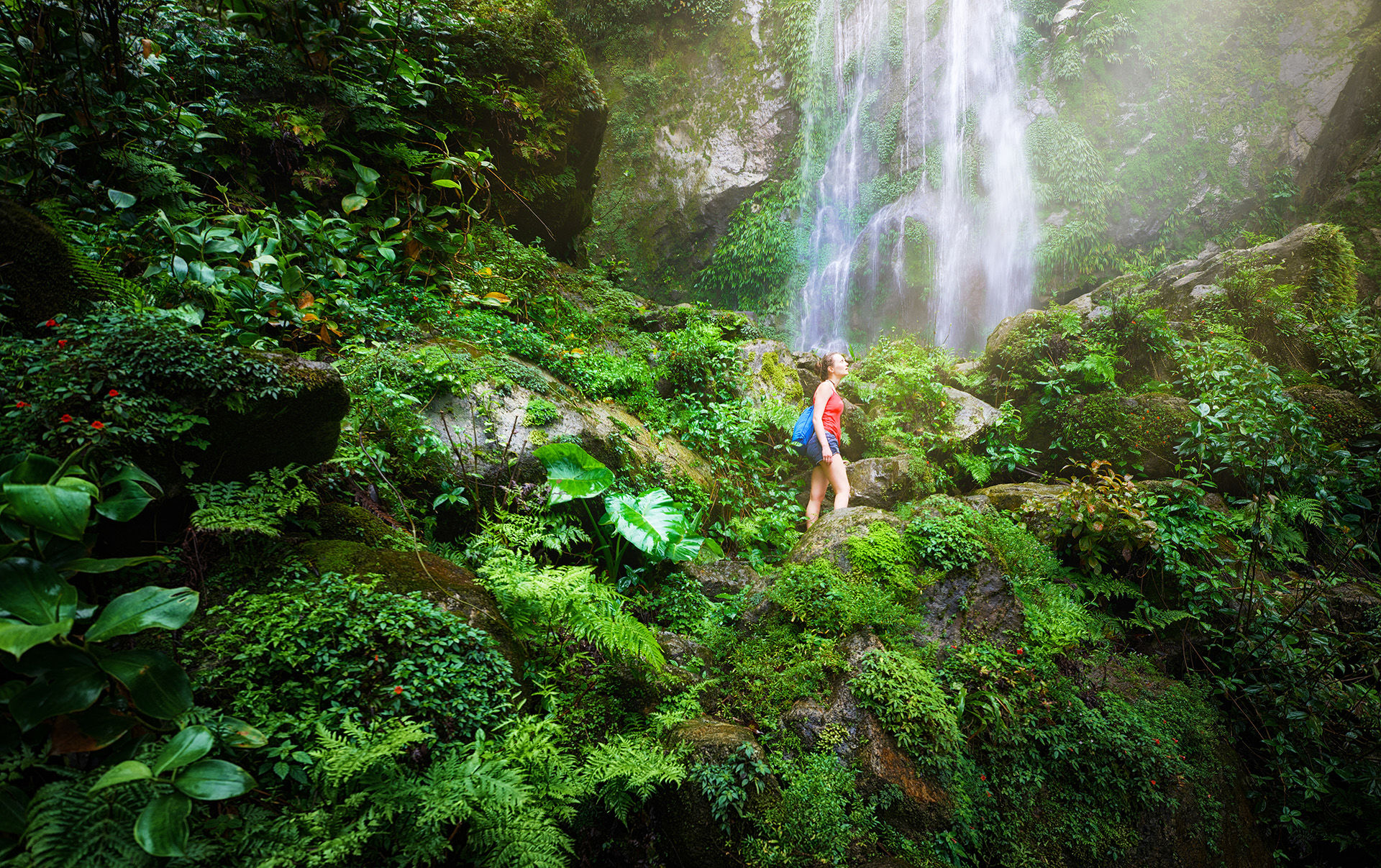
Pathways to a Landscape of Natural Attractions
Coastal rainforests echo with the calls of exotic birds; Clearwater rivers plunge over falls and splash through boulder-filled through canyons; Mist-shrouded highlands harbor groves of trees that harvest moisture from passing clouds. Exotic birds flit from branch to branch. All this and more await those who put on their walking shoes and enter the forests of Honduras. Trails lead to ancient cities, across mountainside coffee farms and into the nation's largest national park, which is one of the most important wildlife corridors in Central America. Here hikers can discover more than 400 species of birds, watch spider monkeys cavort in the treetops, or catch a glimpse of tapirs, deer or an elusive jungle cat.
Highlights
- Best for: Everyone, from relaxing and beach travelers, to soft and rugged adventurers
- Best season to visit: Year round
- Weather: Tropical climate with drier winters, passing summer showers and more frequent rains from October through December. Temperatures range from the 70s to summertime highs near 90
Things to Do
Honduras Information
Hiking in Honduras Overview
A majority of both independent and guided hikes in Honduras take place in the Pico Bonito National Park, which is the country's largest and most beautiful forest reserve, with more than 250,000 acres of virgin forest. There are seven different ecosystems within the park, from lowland coastal jungles to high-elevation cloud forests on peaks rising to 8.000 feet. The Copan area is also popular for archaeological tours and woodland hikes.
Hiking in Honduras Tips
Though you could devote an entire vacation to hiking in Pico Bonito forest, most visitors mix it up with additional adventures. With mountains and ocean just a few miles apart, it's easy to fill a week with horseback riding, white-water rafting, ziplining, sea kayaking, snorkeling and touring the ancient Mayan ruins of Copán.
Best Places to in Hike in Honduras
La Ceiba Rainforest is home to over 400 species of birds as well as jaguars, tapirs, deer, puma, white-faced and spider monkeys. A suspension bridge over the Cangrejal River gives access to miles of forest trails. A hike along El Bejuco creek leads into a cloud forest, then to a clear-water pool at the base of a waterfall. Near the Lodge at Pico Bonito, a network of trails includes birding towers where hikers can ascend to observe the life of the forest canopy.
What to Pack for Hiking in Honduras
Lightweight long pants will provide both cooling cover and protection from brush growing on trail edges. Hiking shoes are best, but cross-trainers will a pronounced tread will also work. Pack plenty of water, spare socks, bug repellent, sun screen, a swimsuit and a towel for drying off after the swim.
Passport and/or Visa Requirements
A valid passport is required for entry that must be valid for the length of stay. No visa is required for stays less than 90 days. The passport must have at least one blank page for the Costa Rica entry stamp. There is a departure tax of approximately $29 U.S. which should be included in your international ticket. Check the entry/exit requirements here.
Immunizations
There are no immunizations required for entry into Costa Rica, although you should check with your doctor and with the Centers for Disease Control and Prevention for other recommendations.
Culture and Customs
Costa Rica is known as the safest and most prosperous country in Central America. It is home to a large community of North American ex-pats, but also retains its distinctly Latin culture, which includes a relaxed attitude to schedules that is known as “Tico time.” Laid back is not the same as uncaring, however, and Costa Ricans are known for taking pride in their appearances and their work. A well-developed road system connects major destinations, but much of the country's central highlands remain wild and protected within national parks. Within a day's drive of beach resorts at Guanacaste lie the slopes of Arenal Volcano, the Monteverde Cloud Forest and Palo Verde National Park. Costa Rica is the eco-adventure capital of the Caribbean. Surfers come from around the world to ride famous breaks from Witch's Rock to Pavones. Coastal lodges are filled with fishermen seeking light tackle challenges with roosterfish or tugs of war with a marlin. Forests draw birders, hikers and naturalists, and there are more than a dozen rivers offering whitewater rafting thrills. More relaxing experiences await at hot springs, where spa treatments and soaks in mineral-rich volcanic water provide a soothing end to an active day.
Electricity, Phone and Internet Access
The standard in Costa Rica is the same as in the United States: 110 volts AC (60 cycles). Some electric outlets only have 2 prong sockets, so an adapter may be needed for 3 prong plugs.
Costa Rica has an excellent phone system, and the country code for dialing is 506. Check with your cell phone provider for international data and voice plans and costs.
Many resorts and restaurants offer WiFi.
Water Quality
Although the water in Costa Rica is generally safe to drink, water quality varies in some cities. It would be best to use bottled water and avoid ice.
Language & Currency
Spanish is the official language of Costa Rica, but English is widely spoken. The Costa Rican currency is called the “colon”. Check the current exchange rate here. Many businesses will accept U.S. Dollars and major credit cards are widely accepted.
Time
Costa Rica is on Central Standard Time, 6 hours behind Greenwich Mean Time (-6 GMT). Costa Rica does not use daylight saving time, so the time difference is an additional hour April through October.
Location, Size and Population
Costa Rica is located in Central America, bordering both the Caribbean Sea and the North Pacific Ocean, between Nicaragua (to the north) and Panama (to the south). Costa Rica encompasses a total of 19,700 square miles (51,100 square kilometers).
The population of Costa Rica is 4.9 Million (2015) with approximately 350,000 living in the province of Guanacaste.